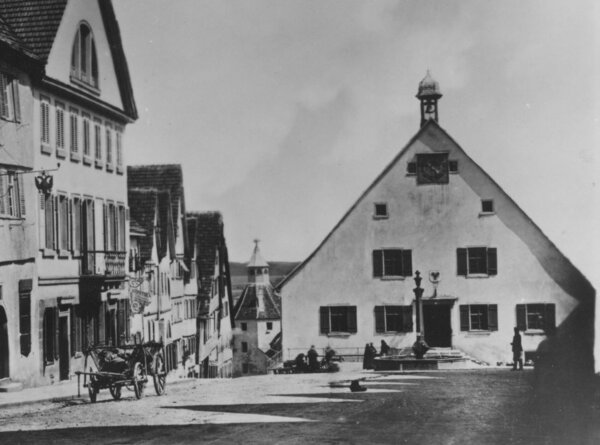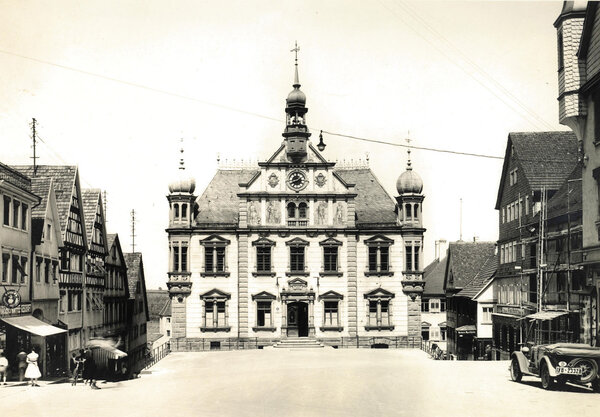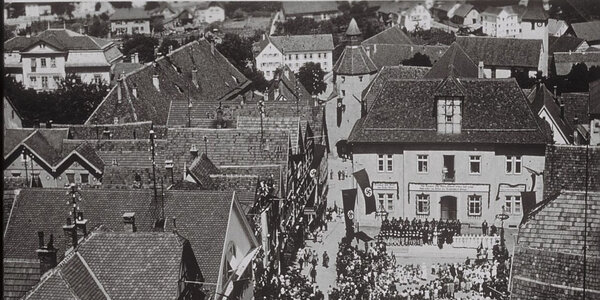Look back to the past. Over the years, Hechingen Town Hall was converted or re-built at least six times.
Hechingen Town Hall was mentioned for the first time as early as 1461. During conversion work in 1768 the rear part was replaced by a timber frame and more useable space was created. During another conversion in 1815, school classes and another floor were to be built. The entire gothic façade including the tower of the Town Hall, referred to back then as "powerful", was ground bare. The foundations could not hold an additional floor, meaning the construction work had to stop. The Town Hall which looked like a newbuild used what back then were modern stylistic elements of classicism.
Conversion in Neo-Renaissance style
A conversion was carried out by the land curator and royal civil servant and building officer Wilhelm Friedrich Laur during the founding period in 1885/86. An additional floor was added and a stone façade was built in Neo-Renaissance style with tower, pilasters and cornices.
Sobriety sets in – conversion of 1934
In 1934, during the NS regime, the Town Hall was "cleansed" by Paul Schmitthenner: the façade – towers included – was removed. Air-raid shelters were also installed, which badly damaged the foundations. However, these constructional deficiencies were not discovered until the post-war years. The residents of Hechingen were less than impressed with the conversion, they jokingly referred to the building as a sheep pen.



